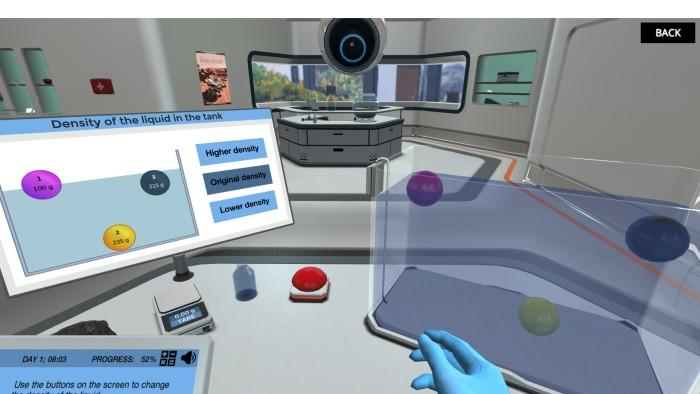
Ever thought about why boats, ships, and submarines can move on water or dive deep, while we can also enjoy a relaxing swim in a lake? It’s all thanks to a simple but amazing thing called buoyancy, an upward push from water that helps things stay afloat.
Understanding this abstract concept is essential in many areas like building boats, exploring oceans, and even having fun at the beach. To help educators teach this fascinating topic, this article provides five innovative strategies to engage students and make their learning journey fun and exciting.
Interactive models can help students visualize complex concepts and enhance their learning experience. For instance, the concept of buoyancy would be better comprehended if students visually see how a buoyant force acts on objects that are submerged in water.
With interactive models, teachers not only make abstract concepts more tangible but also enable students to experiment with different parameters and observe their effects. One of the great resources in this regard is Labster virtual lab simulations, where students interact with 3D models and conduct experiments in a safe environment.

For instance, in our Applications of Buoyancy simulation, students experiment with submerging three balls of different weights in a fluid. They investigate how buoyancy is affected by changes in weights and whether each ball floats or sinks in water.
By incorporating interactive models to teach floatation principles, you can stimulate students' curiosity and encourage active participation in discussion.
Adding games and group activities into your lessons is another great technique to grab students’ attention. Group activities can help to reinforce learning, promote teamwork, and improve problem-solving skills.
With interesting games, you are making their learning process fun and they are likely to retain the information that is being taught. You can assess their understanding with trivia games.
Another activity could be arranging a contest called “Buoyancy Challenge”. Divide students into groups of 3 or 4 and assign them projects that demonstrate the buoyancy principles. For instance, you can ask them to create a floating boat or a lantern.
These interactive experiences provide opportunities for students to apply their knowledge and collaborate with peers.
It can be hard for teachers to write and explain all the concepts on the board. So, they should integrate advanced methods into their lessons.
Utilizing technology in the classroom can make lessons more dynamic and accessible to students with diverse learning styles. With 3D animations, videos, and simulations, students can easily visualize complex concepts.
Labster provides you with that advanced technology. Our interactive simulations, set up in a 3D world, are tailored to meet the needs of young minds For example, in the Buoyancy simulation, students virtually observe flotation principles and how objects float or sink in water. Moreover, they apply their understanding of buoyant force in designing a swimsuit within the simulation.

These technological tools not only enhance students’ understanding but also prepare them for the tech-driven world in which they will eventually work.
Discover Labster's Buoyancy virtual lab today!
Connecting the principles of buoyancy and floatation to career exploration can help students understand the practical use of these concepts and inspire them to pursue related fields.
By mentioning, various career paths that rely on these principles, you can spark their interest and demonstrate the far-reaching implications of their learning.
Examples of careers related to buoyancy and floatation include design engineers, naval architects, aeronautical engineers, and oceanographers. They use these principles to design and build ships and space crafts
Physics is all about real-world applications. So, teaching it with applications is not a choice but a requirement. With real-world applications, students can see the physical relevance of the subject being taught to them.
Examples of real-world applications involve designing and constructing ships, submarines, and offshore structures.
To further deepen their understanding, you can organize field trips to relevant locations such as a shipyard or shipbuilding plant. These visits allow students to witness firsthand how physics concepts are applied in practice.
When they see the practical implications of their learning, it sparks their interest and encourages them to critically think about the subject matter.
Final thoughts
To help students understand buoyancy and floatation, it’s important to use different teaching methods that are fun and engaging. By implementing these creative approaches, educators can make learning enjoyable and meaningful for students.
Try our free 30-day All Access Educator's Pass today and teach with Applications of Buoyancy simulation alongside 300+ other virtual labs!

Labster helps universities and high schools enhance student success in STEM.
Request DemoRequest a demo to discover how Labster helps high schools and universities enhance student success.
Request Demo